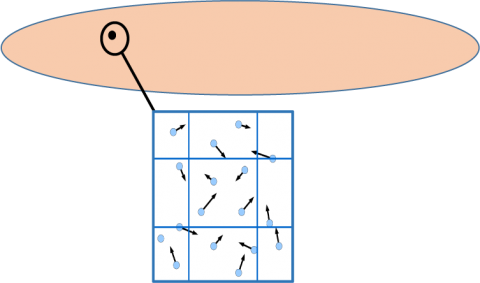Stochastic space charge algorithm
Electrical repulsion can blow up electron beams, an effect known as space charge repulsion. Space charge is particularly challenging for intense beams produced by high performance photocathodes, such as those under development at CBB. Till now, simulating space charge has been difficult because tracking the millions of electrons is computationally prohibitive, while simplifications tend to sacrifice important features. CBB has developed a new algorithm that captures the point-like nature of electrons in their interactions with the photocathode and each other, but with greatly reduced CPU demands. The new technique will be key as CBB optimizes beamlines to take maximal advantage of the new photocathodes in order to achieve bright beams.

